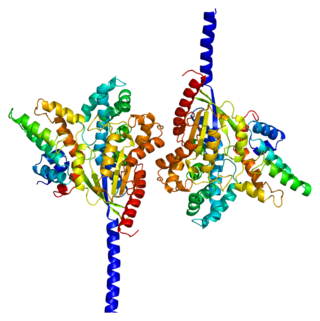Top Qs
Timeline
Chat
Perspective
RGS4
Protein-coding gene in the species Homo sapiens From Wikipedia, the free encyclopedia
Remove ads
Regulator of G protein signaling 4 also known as RGP4 is a protein that in humans is encoded by the RGS4 gene. RGP4 regulates G protein signaling.[5]
Remove ads
Function
Regulator of G protein signalling (RGS) family members are regulatory molecules that act as GTPase activating proteins (GAPs) for G alpha subunits of heterotrimeric G proteins.[6] RGS proteins are able to deactivate G protein subunits of the Gi alpha, Go alpha and Gq alpha subtypes. They drive G proteins into their inactive GDP-bound forms. Regulator of G protein signaling 4 belongs to this family. All RGS proteins share a conserved 120-amino acid sequence termed the RGS domain which conveys GAP activity.[7] Regulator of G protein signaling 4 protein is 37% identical to RGS1 and 97% identical to rat Rgs4. This protein negatively regulates signaling upstream or at the level of the heterotrimeric G protein and is localized in the cytoplasm.[5]
Remove ads
Clinical significance
A number of studies associate the RGS4 gene with schizophrenia,[8][9][10][11] while some fail to detect an association.[12]
RGS4 is also of interest as one of the three main RGS proteins (along with RGS9 and RGS17) involved in terminating signalling by the mu opioid receptor,[13] and may be important in the development of tolerance to opioid drugs.[14][15][16][17][18]
Inhibitors
Interactions
RGS4 has been shown to interact with:
References
Further reading
Wikiwand - on
Seamless Wikipedia browsing. On steroids.
Remove ads








